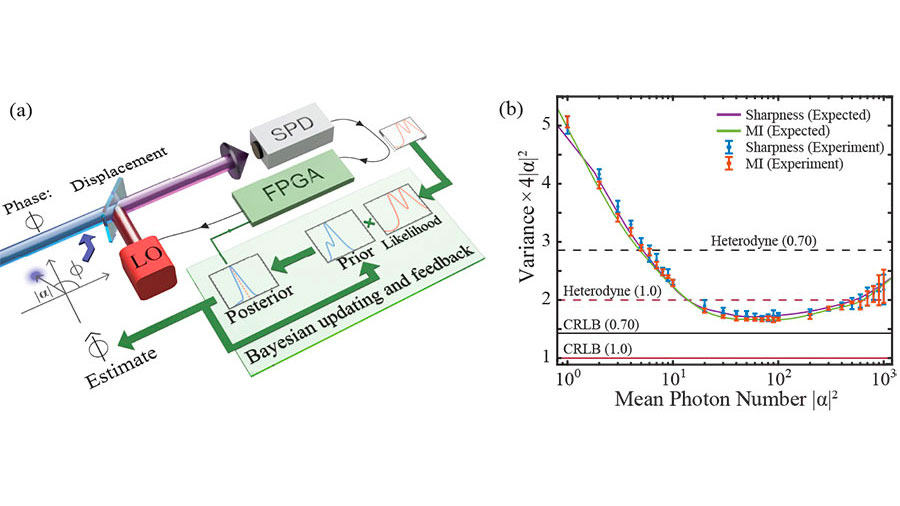Optical phase estimation approaching the quantum limit in a single shot.
December 3, 2020

Optical phase estimation is at the center of many metrological tasks where the value of a physical parameter of a system is mapped to the phase of an electromagnetic field, and single-shot measurements of this phase retrieve the information of this parameter. In this article, we demonstrate optimized estimation strategies for single-shot measurements for the optical phase of coherent states, which achieve sensitivities surpassing the heterodyne limit and potentially approaching the quantum limit, the Cramer-Rao lower bound (CRLB). These strategies are based on optimized photon counting, coherent displacement operations, and fast feedback. Our demonstration uses fast processing for optimizing the single-shot measurement during the optical mode, and enables surpassing the heterodyne limit for a wide range of optical powers without correcting for detection efficiency of our system. This is, to our knowledge, the most sensitive single-shot measurement of an unknown phase encoded in optical coherent states.
Read more at the American Physical Society (APS).
